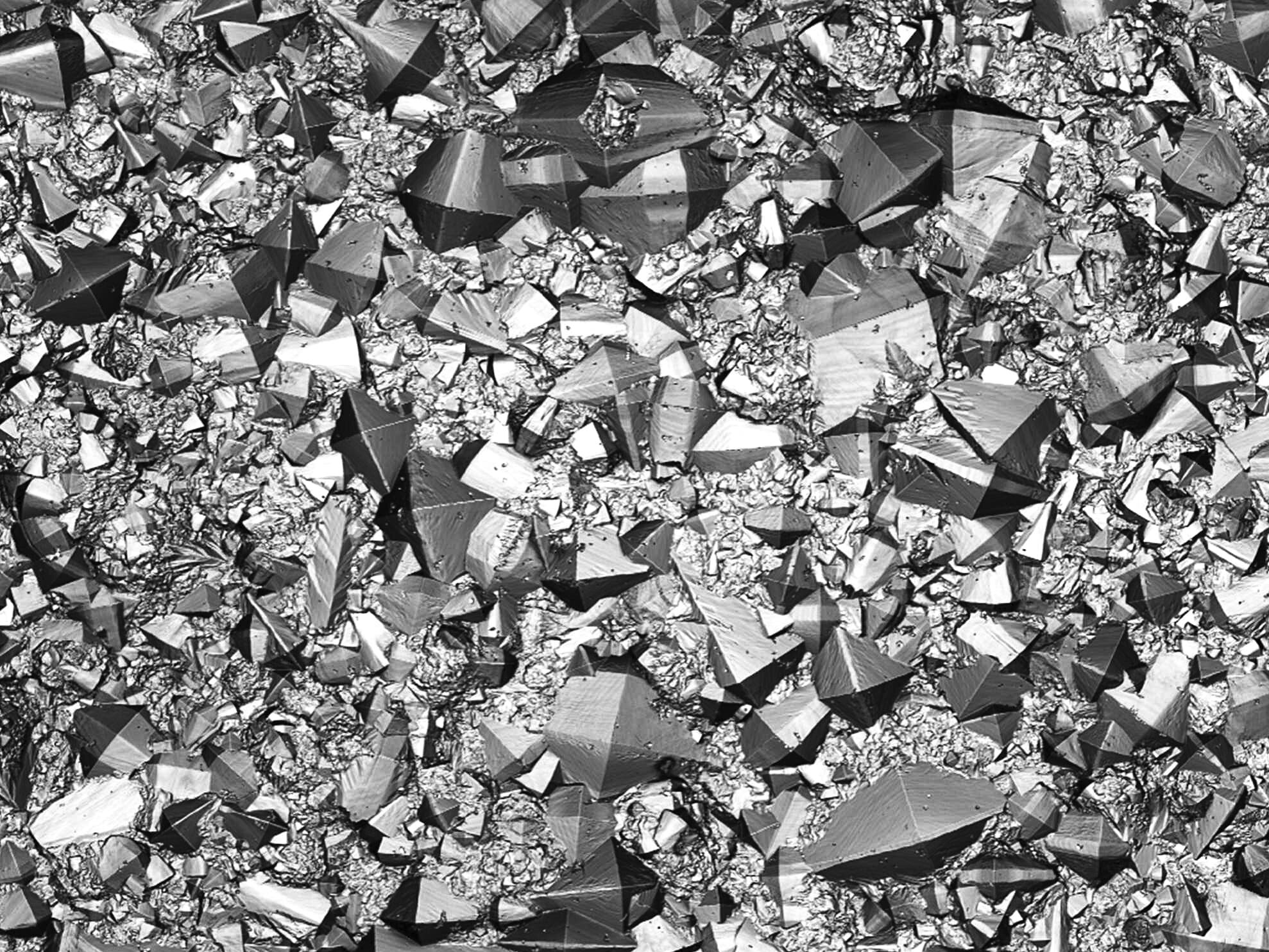Extended service life of graphite and C/C components
Our graphite and C/C components offer solutions for numerous challenging application conditions. With the appropriate coating, the limits of the application are pushed further:
The coating improves product quality and increases process efficiency, thus reducing overall operating costs for our custmers. This coating extends the service life of graphite components and achieves the high-purity surface structures required in processing semiconductor materials.
Wide range of applications for SiC-coated graphite products
SiC-coated graphite products can be used in numerous applications within the value chain of the semiconductor industry:
We supply SiC-coated products made from high-strength isostatic graphite and carbon fiber-reinforced carbon. These include components for fluidized-bed reactors and STC-TCS converters, as well as reflectors for CZ units and wafer carriers for PECVD, Si epitaxy, and MOCVD units.
SIGRAFINE SiC Coating
Material data of SIGRAFINE SiC Coating
| Typical properties | Units | Values |
|---|---|---|
| Structure | beta (cubic) 3C polytype | |
| Orientation | Fraction (%) | 111 preferred |
| Bulk density | g/cm³ | 3.2 |
| Stoichiometry | 1:1 Sl/C | |
| Hardness | GPa | 40 |
| Fracture toughness | MPa m1/2 | 3.0 |
| Thermal expansion 100–600 °C (212–1112 °F) | 10-6K-1 | 4.3 |
| E-modulus | GPa | 435 |
| Typical film thickness | µm | 100 |
| Surface roughness | µm | 2,5 |
Purity data of SIGRAFINE SiC coating (Glow Discharge Mass Spectroscopy)
| Element | ppm | Element | ppm |
|---|---|---|---|
| Sodium | < 0,05 | Copper | < 0,01 |
| Magnesium | < 0,01 | Zinc | < 0,05 |
| Aluminum | < 0,04 | Gallium | < 0,05 |
| Phosphorus | < 0,01 | Germanium | < 0,05 |
| Sulfur | < 0,04 | Arsenic | < 0,005 |
| Potassium | < 0,05 | Indium | < 0,01 |
| Calcium | < 0,05 | Tin | < 0,01 |
| Titanium | < 0,005 | Antimony | < 0,01 |
| Vanadium | < 0,001 | Tungsten | < 0,01 |
| Chromium | < 0,05 | Tellurium | < 0,01 |
| Manganese | < 0,005 | Lead | < 0,01 |
| Iron | < 0,01 | Bismuth | < 0,01 |
| Nickel | < 0,005 |
SIGRAFINE Advanced SiC coating for mini and micro LED
The requirements of the market and our customers for SiC coatings were constantly evolving during the last few years, with demands for tighter coating specifications and for product consistency. SGL Carbon, in collaboration with one of the world's leading universities on CVD coatings, has developed an Advanced SiC coating to meet current and future customer requirements. The newly developed SIGRAFINE Advanced SIC coating offers significant advantages over standard SiC coatings:
- Improved uniformity
- Improved material consistency
- Improved lifetime
- Higher chip yields possible through improved photoluminescence
With the new SIGRAFINE Advanced SiC coating, we support our customers' developments with regard to the requirements of a constantly changing LED market.
SiC coating process
Silicon carbide is deposited as thin layers on SGL Carbon's isostatic graphite using CVD (chemical vapor deposition). The deposition typically takes place at temperatures of 1,200-1,300 °C. The thermal expansion behavior of the substrate material should be adapted to the SiC coating to minimize thermal stresses.
SIGRAFINE duro SiC coating on graphite for industrial applications
A SiC gradient coating combines the beneficial properties of classical SiC coatings, such as the distinctive protection from thermal, chemical or mechanical stress, with increased stability during thermoshock and cyclic loads. This is achieved by the interlocking structure of the graphite base material with the SiC coating.
SIGRAFINE duro SiC with its gradient (SiC) coating provides:
- enhanced abrasion/erosion stability
- increased oxidation stability
- enhanced interlocking between SiC and graphite
- adapted interface for other conventional coatings
Depending on application requirements, the SiC gradient coating can be adjusted to your needs.





